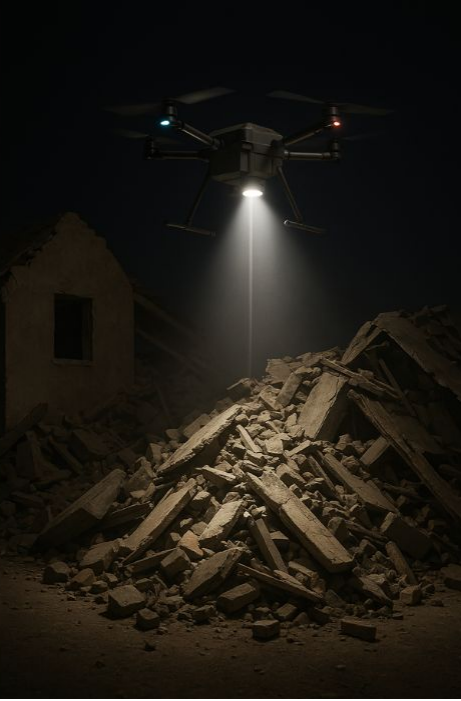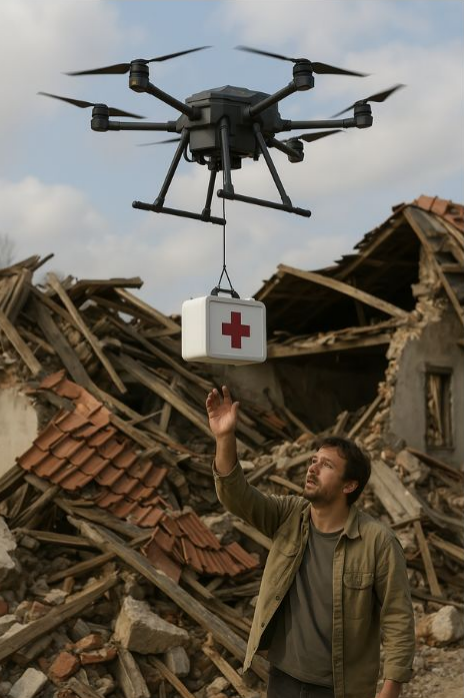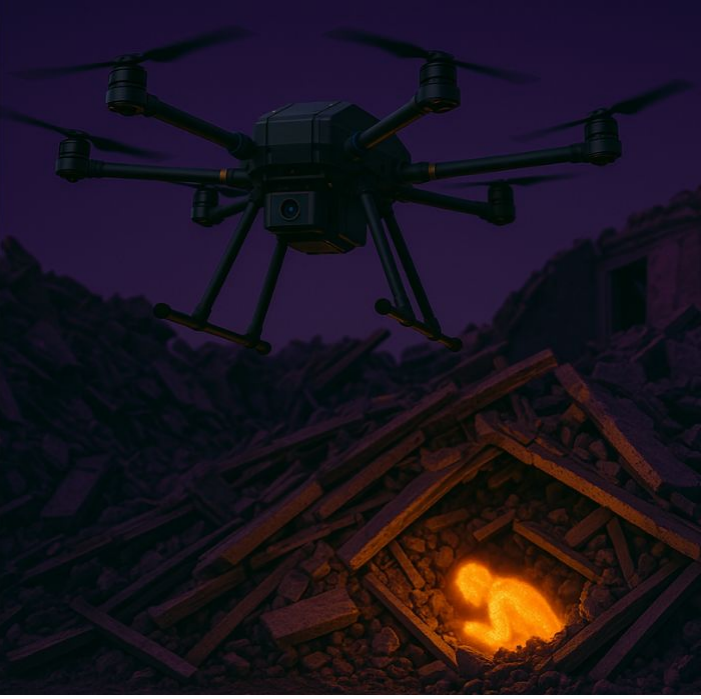How Drones Are Changing Disaster Response
How Drones Are Changing Disaster Response
Apr 09, 2025
Natural disasters strike without warning. Earthquakes, floods, and wildfires can destroy roads, buildings, and power lines in minutes, and overall, people could get trapped. When cities go dark and communication stops: that’s where drones come in.
Drones/UAVs (Unmanned Aerial Vehicles), are becoming essential in disaster response. They fly above to see the damages and access to places and images humans can’t.

Lighting the Darkness and Restoring Connection
Disasters often knock out electricity. It becomes hard to see, especially at night. Communication networks could also crash, making it impossible for rescue teams to talk to each other or to victims. But tethered drones offer a solution. Tethered drones are connected to the ground by a cable. This gives them constant power, so they can stay in the air for hours or even days. With strong lights attached, they can illuminate dark areas, helping search teams work safely at night or in buildings with no power. They also act as temporary cell towers. As noted by Khan et al. (2022), these drones can restore communication for emergency teams when local systems are down.. That’s critical in the first hours after a disaster. For example, after floods or earthquakes, response teams can fly a tethered drone above the affected zone. It lights up the area for rescue operations and helps people reconnect with their families. All from a single drone.

Fast and Contact-Free Delivery of Aid
Getting food, water, and medicine to people after a disaster is often very difficult. Roads may be blocked by debris or destroyed. Bridges may be gone. Cars can’t pass. But drones can fly right over the obstacles.
In Japan, during the 2024 Noto Peninsula Earthquake, drones were used to deliver emergency supplies to areas that could not be reached by land. Drones dropped food, first aid kits, and even communication devices. In some cases, they helped restore cellphone coverage too.
It could be multi-rotor drones or VTOL drones, as they can carry up to a few kilograms and land in tight spaces like rooftops or small courtyards. Perfect for cities, villages, or mountainous areas. Drones are especially useful when roads are unsafe. They don’t need fuel or a driver. They reduce human risk. And because they fly quickly, they get help to people faster. In future disaster zones, swarms of delivery drones could keep aid flowing while teams on the ground focus on rescue.

Finding Survivors with Thermal Cameras
One of the most powerful uses of drones is in search and rescue. After a disaster, people might be trapped under rubble, hidden in the woods, or stuck on rooftops. Time is everything. Surveillance drones with thermal imaging cameras can detect body heat. They fly over an area and spot people even in complete darkness, heavy smoke, or bad weather. This technology has already helped in wildfire zones, earthquake sites, and search operations after landslides. The drones send real-time video to command centers, so rescuers know exactly where to go. As Daud et al. (2022) explain, this reduces the time it takes to find people. It also keeps rescuers safe by scanning dangerous areas before they enter.

Introduce a System
The most effective drone operations happen when these tools are used together.
Imagine this:
- A tethered drone is launched as soon as the disaster hits. It lights up a collapsed building and provides communication.
- A team sends out surveillance drones with thermal cameras to scan for survivors.
- At the same time, delivery drones bring in first aid supplies and warm blankets to people trapped in isolated homes.
Each type of drone supports the others. Together, they create a complete aerial support system.
Moreover, public and private sectors can work side-by-side to coordinate drone flights, share data, and respond more efficiently . These partnerships are key for future drone use in emergencies.
In conclusion, every minute counts after a disaster. Drones give us speed, access, and information. They help first responders work smarter, faster, and safer.

Recent Posts

October 26, 2016
The Most Successful Engineering Contractor
Jun 27, 2025
UAV Training Academies
May 21, 2025
WHY INTEGRATE DRONES IN SMART CITIES?
Apr 22, 2025
WILDLIFE MONITORING AND CONSERVATION APPLICATION
Mar 20, 2025
How to improve border security?


